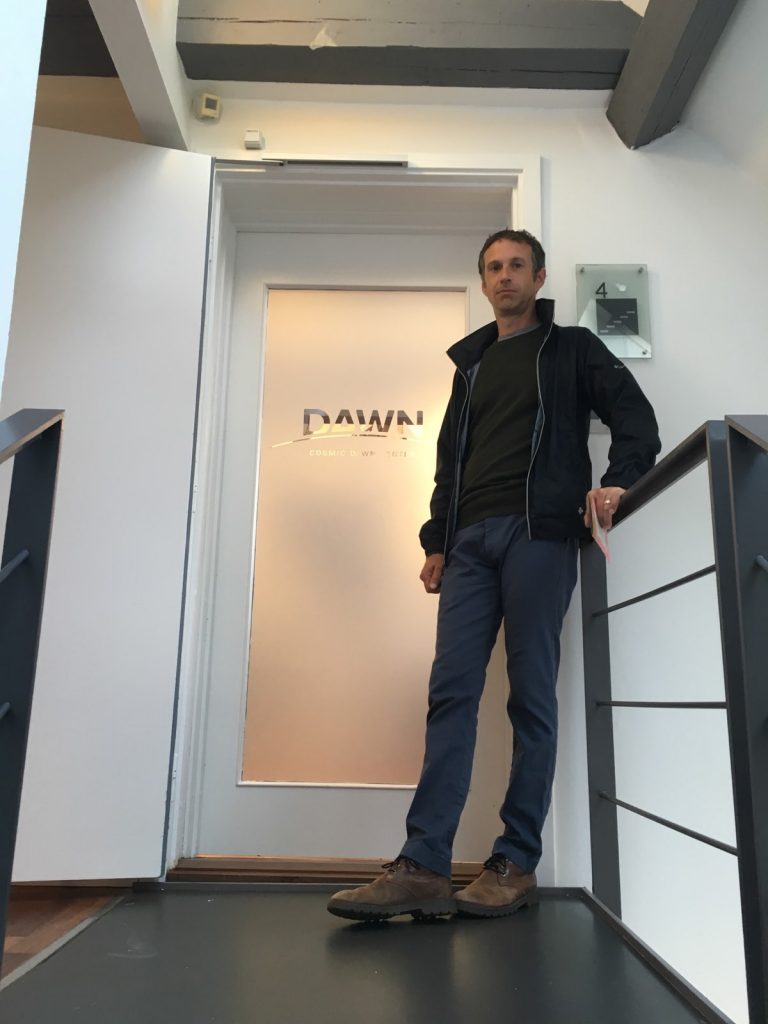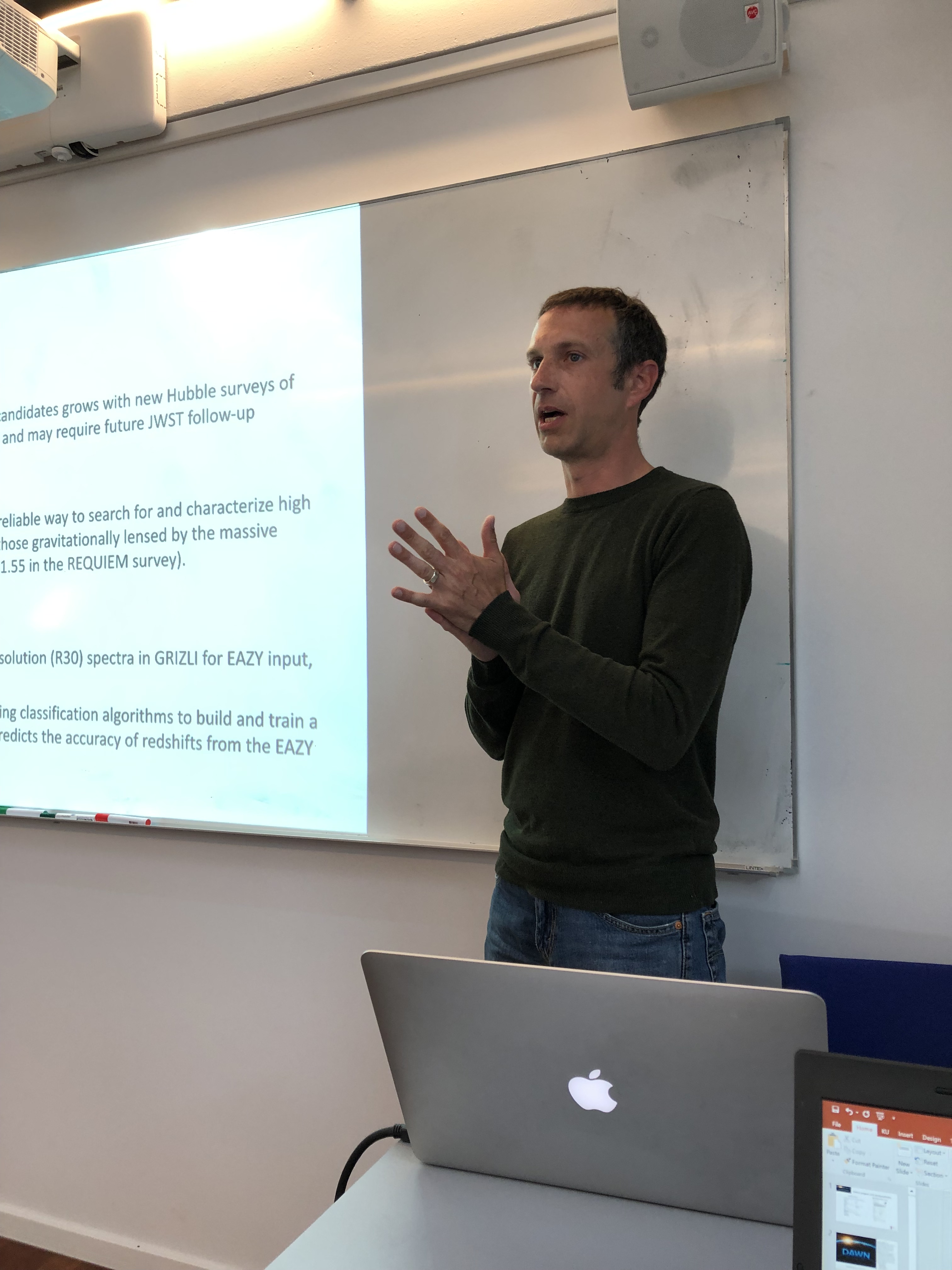Darren Stroupe, UNC Asheville, visiting DAWN

- Darren Sproules, USC Asheville
" This summer I had the great privilege of participating in theDAWN-IRES (International Research Experience for Students) Scholar Program. I conducted research at The Cosmic Dawn Center (DAWN)* in Copenhagen at the Niels Bohr Institute, where the early Universe and first galaxies are studied through observation, theory and simulation. My research focused on classifying the quality of redshift fits using low-resolution grism spectra and machine learning classification models. The work was intense but gave me insight into many different areas of knowledge (e.g. the high-redshift universe, emission lines, telescope instrumentation, statistics) and provided me with new tools and sharpened skills that I will use throughout my career (e.g. GRIZLI, EAZY, Python, machine learning). My mentor, Dr. Gabe Brammer (who developed GRIZLI and EAZY) provided strong guidance and generated a flood of knowledge every time we met about the project. He and the rest of the staff and students at DAWN are at the forefront of their field and set a high bar for caliber of research. It was humbling to be welcomed by them.
DAWN also scheduled talks by astronomers and astrophysicists from around the world on subjects ranging from gravitational lensing to galaxy formation and simulations, with Q&A sessions shared by the speakers and the Scholar cohort. Astrophysicist Dr. Joseph Silk, namesake of Silk Damping and author of The Big Bang – a book that was very influential in igniting my interest in astronomy – gave one of the talks, which afforded me the honor of meeting him and shaking his hand.
We were also treated to a trip by ferry to the island of Hven, where Tycho Brahe made the arcminute-precision measurements of the positions of astronomical objects that led to Kepler’s three laws of planetary motion that, in turn, helped lay the foundation for Newton’s theory of universal gravitation. The museum there housed some of his instruments and writings, as well as artifacts from the now long-gone observatories. "
"With the workday finished, I could ruminate on the latest obstacle in my research while exploring Copenhagen by foot, bicycle (also provided by DAWN), boat, bus or train. The Viking settlement-turned-European capital city offers a lifetime’s-worth of cultural, architectural and historical riches to enjoy: the 17th century fortifications that were repurposed as lush parks and gardens that form a ring around the inner city; the many museums that include the National Gallery of Denmark, the National Museum, the Workers Museum and Design Museum Danmark; the free-to-the-public pipe organ concerts in many of the city’s cathedrals; the canals that could be traversed by boat for a different perspective of the buildings and palaces that span centuries in age and design, or simply enjoyed by sitting upon their banks with a cold beverage. I found no way to avoid having a great experience.
While I was unfortunately unable to visit the Niels Bohr Archive, his presence loomed large, nonetheless. I would often, on my walks, find myself at a historical landmark or some tribute to Bohr – or Brahe – reminding me of the deep legacy of physics and astronomy to which I hope to contribute. I cannot fully express my gratitude to Dr. Kate Whitaker and the DAWN-IRES organizers, Dr. Brammer and the DAWN staff and students, and Drs. Britt Lundgren and David Wake at the UNC Asheville Department of Physics and Astronomy for the encouragement, support, skills and knowledge they have gifted me over the course of this experience. With this experience, I feel confident I can contribute to and share in the legacy of those who came before and those who continue to extend the realm of knowledge in physics and astronomy. "

* The DAWN center is funded by the Danish National Research Foundation (DNRF).
